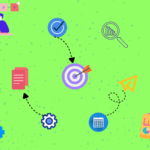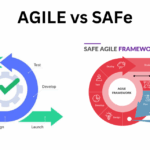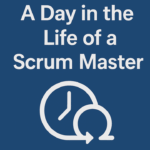Home / Our Blog / Product Owner: Understanding Role, Responsibilities, & Importance
Product Owner: Understanding Role, Responsibilities, & Importance
Jul 29, 2025 Educational
If you’re working in an Agile or Scrum team, you’ve probably heard the term Product Owner thrown around a lot. But what exactly does a Product Owner do? Why are they essential to the success of a project? And how do they differ from a Scrum Master?
Whether you’re new to Agile or looking to sharpen your understanding, this guide will break down the role of a Product Owner in simple, practical terms, from responsibilities to real-world examples. We’ll also explore how the Product Owner drives product success and ensures the team builds something that users actually want.
Let’s start with the basics.
What is a Product Owner?
A Product Owner (PO) is the person responsible for defining and communicating the product vision to the development team. They make sure the team is building the right product by prioritizing what should be worked on and when. The Product Owner acts as the voice of the customer within the Scrum team, constantly balancing business goals, user needs, and technical constraints.
In simple terms, think of the Product Owner as a mini-CEO of the product.
Example:
Imagine you’re building a mobile app for online grocery delivery. The Product Owner would decide which features get built first, like the shopping cart, payment gateway, or delivery tracking, based on customer needs, market trends, and business strategy. They’re not writing code, but they’re steering the ship.
Product Owner vs. Scrum Master
The roles of Product Owner and Scrum Master are both critical in Agile, but they serve very different purposes.
| Product Owner | Scrum Master |
| Owns the product | Owns the process |
| Focuses on what the team builds | Focuses on how the team works |
| Represents business and customer needs | Coaches the team on Agile principles |
| Prioritizes backlog items | Removes blockers and supports team performance |
Example:
In the grocery app scenario, the Product Owner decides that integrating with PayPal is a top priority. Meanwhile, the Scrum Master ensures the team follows Agile ceremonies (like daily stand-ups) and helps them stay focused and collaborative.
Product Owner Responsibilities
The Product Owner’s role is dynamic and hands-on. Below are the key responsibilities, explained with real-world context:
1. Define Product Features and Goals
Before anything gets built, the Product Owner sets a clear vision. They work with stakeholders, users, and leadership to define what the product should achieve.
Example:
The grocery app’s goal might be to reduce delivery time by 20%. From this, the Product Owner might define a feature like real-time driver tracking.
2. Develop Backlog Items Based on Product Goals
Once goals are defined, they’re translated into actionable backlog items. These are small, specific tasks the development team will work on during sprints.
Example:
For the goal of improving delivery tracking, backlog items might include:
- Integrating GPS APIs
- Building a driver dashboard
- Creating push notification functionality
3. Prioritize Input from Stakeholders and End Users
A great Product Owner listens carefully. They gather feedback from marketing, sales, customer support, and actual users, and turn that input into product decisions.
Example:
If customer support reports that users struggle with the app’s login process, the Product Owner may prioritize simplifying that feature—even if it wasn’t on the original roadmap.
4. Create User Stories
User stories explain product features from the end user’s perspective. They help developers understand why a feature matters.
Example:
“As a user, I want to track my grocery delivery on a map so I can estimate when it will arrive.”
This user story explains the what and the why, guiding developers toward the how.
5. Prioritize and Manage the Product Backlog
The backlog is a living document, always changing. The Product Owner keeps it clean, organized, and aligned with priorities.
They constantly ask: What brings the most value to users and the business right now?
Example:
If a competitor launches a one-hour delivery feature, the Product Owner might bump up related backlog items to stay competitive.
6. Oversee Product Development Stages
The Product Owner stays involved throughout development, attending sprint planning, reviews, and retrospectives. They answer questions, adjust priorities, and give feedback.
Example:
During a sprint review, if the map tracking feature is only 80% complete, the Product Owner might decide to delay release or strip it down to the essentials to meet a deadline.
7. Ensure the Scrum Team Follows Guidelines for Product Development
While they don’t manage the team directly, Product Owners help ensure that development stays aligned with Scrum values, transparency, inspection, and adaptation.
They work closely with the Scrum Master to maintain a healthy team environment and keep everyone focused on delivering value.
Why is a Product Owner Important?
A strong Product Owner can be the difference between a product that thrives and one that fizzles out.
Here’s why:
- They make sure the team builds the right thing, not just the next thing.
- They reduce waste by avoiding unnecessary features.
- They keep the product aligned with business goals and user needs.
- They serve as the single source of truth, minimizing confusion and conflict.
- They make fast, informed decisions to keep momentum high.
Real-World Impact:
In many startups, poor prioritization and unclear product direction lead to delays and bloated apps that users don’t love. A skilled Product Owner prevents this by bringing clarity, focus, and customer empathy to every sprint.
Final Thoughts
The role of a Product Owner is both strategic and tactical. They don’t just define what needs to be built, they champion the product every step of the way. From shaping vision to managing the backlog and interacting with the development team, the Product Owner keeps everything moving in the right direction.
Whether you’re working on a startup MVP or scaling a mature product, having a dedicated Product Owner can make all the difference.









